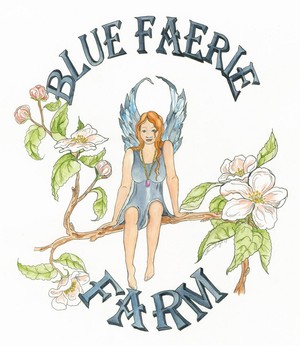02 Jun Tue 2009
How the apples are doing
We finally had a few hours this weekend to spend in the orchard. Things are progressing nicely, despite some of the challenges the weather and my schedule have thrown our way. Just so everyone knows this is only the second year since we established this orchard, so the trees are still very young. Right now we are working to grow apple trees knowing that in time the apples will come. We are growing primarily on dwarf rootstock such as Bud 9 and EMLA 9 and setting everything up in a vertical axe system. While this way of developing an orchard makes lots of sense from a grower’s standpoint and works perfectly with our small farm, it takes some getting used to and is often hard to explain. Picture trees that don't get more than about 10 feet tall, planted in rows 12 feet apart with the trees 4 feet apart in each row. The rows of trees are supported by a trellis, with 8 foot tall poles every 40 feet or so and 4 wires spaced from about 3 feet off the ground to the top of the pole. We don't let the trees develop the classic lollipop shape. Branches tend to be longer at the bottom, starting about 3 feet off the ground, and get progressively smaller the farther up the tree you go.
One of the advantages of growing on dwarf rootstock is that the trees start producing much earlier than full-size trees. We actually do have some apples this year. We only had 45 trees in our initial planting last year. These are the only trees in the orchard that were big enough to allow fruit production this year, although many of the smaller trees did set fruit. The varieties working best for us at the moment are Goldrush and Royal Cortland. We did have really nice fruit set on Transparent and Gala as well, but the constant rain for the week of petal drop kept us from putting out the kaolin clay and allowed the curculio to run rampant in the earlier blooming trees.
Other trees that we planted are developing very nicely. We did get dormant sprays and an early spray for the caterpillars out in time to prevent serious leaf damage. This was a problem for us last year but thankfully we learned from our mistakes. Deer damage was also a major issue for us last year. We had some success with Plant Skydd last year, but it needs to be reapplied with regularity to be effective, and we got behind due to unavoidable circumstances. This year we are using Deer Stopper tape which seems to be doing very well. As the season goes on we will probably add Plant Skydd back into the mix to keep the deer from getting too used to one thing. We will also be working to establish border fencing and hedges. The fencing will be largely in the form of raspberry trellises while hedge candidates are being trialed to see which will work best for us.

